|
|
|
|
 |
CARNIVORES: Raccoons |
|
|
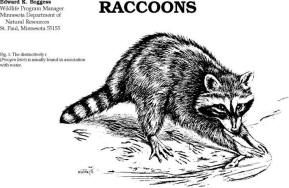
Fig. 1. The distinctively
marked raccoon (Procyon lotor) with water
Identification
The raccoon (Procyon lotor),
also called “coon,” is a stocky mammal about 2 to 3 feet
(61 to 91 cm) long, weighing 10 to 30 pounds (4.5 to
13.5 kg) (rarely 40 to 50 pounds [18 to 22.5 kg]). It is
distinctively marked, with a prominent black “mask” over
the eyes and a heavily furred, ringed tail (Fig. 1). The
animal is a grizzled salt-and-pepper gray and black
above, although some individuals are strongly washed
with yellow. Raccoons from the prairie areas of the
western Great Plains are paler in color than those from
eastern portions of the region.
Fig. 2. Distribution of
the raccoon in North America.
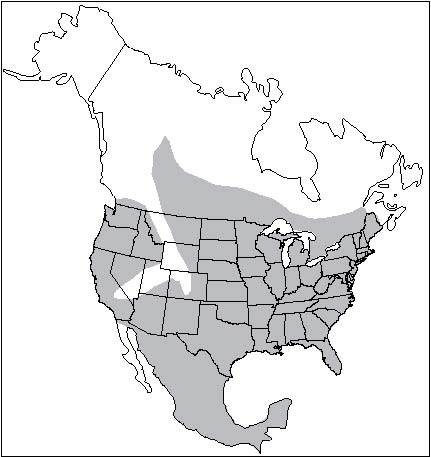 Range Range
The raccoon is found
throughout the United States, with the exception of the
higher elevations of mountainous regions and some areas
of the arid Southwest (Fig. 2). Raccoons are more common
in the wooded eastern portions of the United States than
in the more arid western plains.
Habitat
Raccoons prefer hardwood
forest areas near water. Although commonly found in
association with water and trees, raccoons occur in many
areas of the western United States around farmsteads and
livestock watering areas, far from naturally occurring
bodies of permanent water. Raccoons den in hollow trees,
ground burrows, brush piles, muskrat houses, barns and
abandoned buildings, dense clumps of cattail, haystacks,
or rock crevices.
General Biology, Reproduction, and Behavior
Raccoons are omnivorous,
eating both plant and animal foods. Plant foods include
all types of fruits, berries, nuts, acorns, corn, and
other types of grain. Animal foods are crayfish, clams,
fish, frogs, snails, insects, turtles and their eggs,
mice, rabbits, muskrats, and the eggs and young of
ground-nesting birds and waterfowl. Contrary to popular
myth, raccoons do not always wash their food before
eating, although they frequently play with their food in
water.
Raccoons breed mainly in
February or March, but matings may occur from December
through June, depending on latitude. The gestation
period is about 63 days. Most litters are born in April
or May but some late-breeding females may not give birth
until June, July, or August. Only 1 litter of young is
raised per year. Average litter size is 3 to 5. The
young first open their eyes at about 3 weeks of age.
Young raccoons are weaned sometime between 2 and 4
months of age.
Raccoons are nocturnal.
Adult males occupy areas of about 3 to 20 square miles
(8 to 52 km2), compared to about 1 to 6 square miles (3
to 16 km2) for females. Adult males tend to be
territorial and their ranges overlap very little.
Raccoons do not truly hibernate, but they do “hole up”
in dens and become inactive during severe winter
weather. In the southern United States they may be
inactive for only a day or two at a time, whereas in the
north this period of inactivity may extend for weeks or
months. In northern areas, raccoons may lose up to half
their fall body weight during winter as they utilize
stored body fat.
Raccoon populations
consist of a high proportion of young animals, with
one-half to three-fourths of fall populations normally
composed of animals less than 1 year in age. Raccoons
may live as long as 12 years in the wild, but such
animals are extremely rare.
Usually less than half of
the females will breed the year after their birth,
whereas most adult females normally breed every year.
Family groups of raccoons
usually remain together for the first year and the young
will often den for the winter with the adult female. The
family gradually separates during the following spring
and the young become independent.
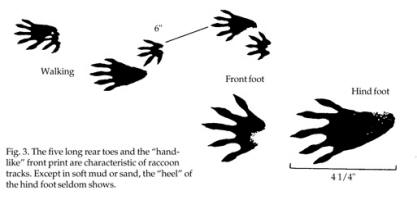
Damage and Damage Identification
Raccoons may cause damage
or nuisance problems in a variety of ways, and their
distinctive tracks (Fig. 3) often provide evidence of
their involvement in damage situations.
Raccoons occasionally kill
poultry and leave distinctive signs. The heads of adult
birds are usually bitten off and left some distance from
the body. The crop and breast may be torn and chewed,
the entrails sometimes eaten, and bits of flesh left
near water. Young poultry in pens or cages may be killed
or injured by raccoons reaching through the wire and
attempting to pull the birds back through the mesh. Legs
or feet of the young birds may be missing. Eggs may be
removed completely from nests or eaten on the spot with
only the heavily cracked shell remaining. The lines of
fracture will normally be along the long axis of the
egg, and the nest materials are often disturbed.
Raccoons can also destroy bird nests in artificial
nesting structures such as bluebird and wood duck nest
boxes.
Raccoons can cause
considerable damage to garden or truck crops,
particularly sweet corn. Raccoon damage to sweet corn is
characterized by many partially eaten ears with the
husks pulled back. Stalks may also be broken as raccoons
climb to get at the ears. Raccoons damage watermelons by
digging a small hole in the melon and then raking out
the contents with a front paw.
Raccoons cause damage or
nuisance problems around houses and outbuildings when
they seek to gain entrance to attics or chimneys or when
they raid garbage in search of food. In many urban or
suburban areas, raccoons are learning that uncapped
chimneys make very adequate substitutes for more
traditional hollow trees for use as denning sites,
particularly in spring. In extreme cases, raccoons may
tear off shingles or facia boards in order to gain
access to an attic or wall space.
Raccoons also can be a
considerable nuisance when they roll up freshly laid sod
in search of earthworms and grubs. They may return
repeatedly and roll up extensive areas of sod on
successive nights. This behavior is particularly common
in mid- to late summer as young raccoons are learning to
forage for themselves, and during periods of dry weather
when other food sources may be less available.
The incidence of reported
rabies in raccoons and other wildlife has increased
dramatically over the past 30 years. Raccoons have
recently been identified as the major wildlife host of
rabies in the United States, primarily due to increased
prevalence in the eastern United States.
Legal Status
Raccoons are protected
furbearers in most states, with seasons established for
running, hunting, or trapping. Most states, however,
have provisions for landowners to control furbearers
that are damaging their property. Check with your state
wildlife agency before using any lethal controls.
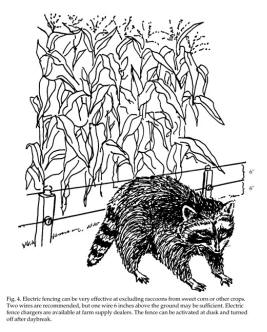 Damage
Prevention and Control Methods Damage
Prevention and Control Methods
Exclusion
Exclusion, if feasible, is
usually the best method of coping with raccoon damage.
Poultry damage generally
can be prevented by excluding the raccoons with tightly
covered doors and windows on buildings or mesh-wire
fences with an overhang surrounding poultry yards.
Raccoons are excellent climbers and are capable of
gaining access by climbing conventional fences or by
using overhanging limbs to bypass the fence. A “hot
wire” from an electric fence charger at the top of the
fence will greatly increase the effectiveness of a fence
for excluding raccoons.
Damage to sweet corn or
watermelons can most effectively be stopped by excluding
raccoons with a single or double hot-wire arrangement
(Fig. 4). The fence should be turned on in the evening
before dusk, and turned off after daybreak. Electric
fences should be used with care and appropriate caution
signs installed. Wrapping filament tape around ripening
ears of corn (Fig. 5) or placing plastic bags over the
ears is an effective method of reducing raccoon damage
to sweet corn. In general, tape or fencing is more
effective than bagging. When using tape, it is important
to apply the type with glass-yarn filaments embedded
within so that the
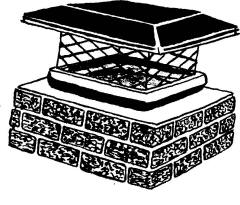
Fig. 5. Wrapping a ripening ear of sweet corn with
reinforced filament tape as shown can reduce raccoon
damage by 70% to 80%. It is important that each loop of
the tape be wrapped over itself so that it forms a
closed loop that cannot be ripped open by the raccoon.
Fig. 6. A cap or exclusion
device will keep raccoons and other animals out of
chimneys. These are available commercially and should be
made of heavy material. Tightly clamp or fasten them to
chimneys to prevent raccoons from pulling or tearing
them off.
Raccoons cannot tear
through the tape. Taping is more labor-intensive than
fencing, but may be more practical and acceptable for
small backyard gardens.
Store garbage in metal or
tough plastic containers with tight-fitting lids to
discourage raccoons from raiding garbage cans. If lids
do not fit tightly, it may be necessary to wire, weight,
or clamp them down to prevent raccoons from lifting the
lid to get at garbage. Secure cans to a rack or tie them
to a support to prevent raccoons from tipping them over.
Prevent raccoon access to
chimneys by securely fastening a commercial cap of sheet
metal and heavy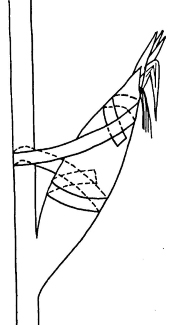 screen over the top of the chimney (Fig. 6). Raccoon
access to rooftops can be limited by removing
overhanging branches and by wrapping and nailing sheets
of slick metal at least 3 feet (90 cm) square around
corners of buildings. This prevents raccoons from being
able to get a toehold for climbing (Fig. 7). While this
method may be practical for outbuildings, it is
unsightly and generally unacceptable for homes. It is
more practical to cover chimneys or other areas
attracting raccoons to the rooftop or to remove the
offending individual animals than to completely exclude
them from the roof.
screen over the top of the chimney (Fig. 6). Raccoon
access to rooftops can be limited by removing
overhanging branches and by wrapping and nailing sheets
of slick metal at least 3 feet (90 cm) square around
corners of buildings. This prevents raccoons from being
able to get a toehold for climbing (Fig. 7). While this
method may be practical for outbuildings, it is
unsightly and generally unacceptable for homes. It is
more practical to cover chimneys or other areas
attracting raccoons to the rooftop or to remove the
offending individual animals than to completely exclude
them from the roof.
Homeowners attempting to
exclude or remove raccoons in the spring and summer
should be aware of the possibility that young may also
be present.
Do not complete exclusion
procedures until you are certain that all raccoons have
been removed from or have left the exclusion area.
Raccoons frequently will use uncapped chimneys as natal
den sites, raising the young on the smoke shelf or the
top of the fireplace box until weaning. Homeowners with
the patience to wait out several weeks of scratching,
rustling, and chirring sounds will normally be rewarded
by the mother raccoon moving the young from the chimney
at the time she begins to wean them. Homeowners with
less patience can often contact a pest removal or
chimney sweep service to physically remove the raccoons.
In either case, raccoon exclusion procedures should be
completed immediately after the animals have left or
been removed.
Habitat Modification
There are no practical
means of modifying habitat to reduce raccoon
depredations, other than removing any obvious sources of
food or shelter which may be attracting the raccoons to
the premises. Raccoons forage over wide areas, and
anything other than local habitat modification to reduce
raccoon numbers is not a desirable technique for
reducing damage.
Raccoons sometimes will
roll up freshly laid sod in search of worms or grubs. If
sodded areas are not extensive, it may be possible to
pin the rolls down with long wire pins, wooden stakes,
or nylon netting until the grass can take root,
especially if the damage is restricted to only a portion
of the yard, such as a shaded area where the grass is
slower to take root. In more rural areas, use of
electric fences may be effective (see section on
exclusion). Because the sod-turning behavior is most
prevalent in mid-to late summer when family groups of
raccoons are learning to forage, homeowners may be able
to avoid problems by having the sod installed in spring
or early summer. In most cases, however, removal of the
problem raccoons is usually necessary.
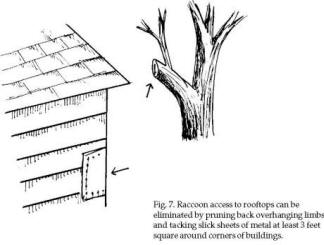 Frightening Frightening
Although several
techniques have been used to frighten away raccoons,
particularly in sweet corn patches, none has been proven
to be effective over a long period of time. These
techniques have included the use of lights, radios,
dogs, scarecrows, plastic or cloth streamers, aluminum
pie pans, tin can lids, and plastic windmills. All of
these may have some temporary effectiveness in deterring
raccoons, but none will provide adequate long-term
protection in most situations.
Repellents, Toxicants,
and Fumigants
There are no repellents,
toxicants, or fumigants currently registered for raccoon
control.
Trapping
Raccoons are relatively
easy to catch in traps, but it takes a sturdy trap to
hold one. For homeowners with pets, a live or cage-type
trap (Fig. 8) is usually the preferable alternative to a
leghold trap. Traps should be at least 10 x 12 x 32
inches (25.4 x 30.5 x 81.3 cm) and well-constructed with
heavy materials. They can be baited with canned
fish-flavored cat food, sardines, fish, or chicken.
Place a pile of bait behind the treadle and scatter a
few small bits of bait outside the opening of the trap
and just inside the entrance. Traps with a single door
should be placed with the back against a wall, tree, or
other object. The back portion of the trap should be
tightly screened with one-half inch (1.3 cm) or smaller
mesh wire to prevent raccoons from reaching through the
wire to pull out the bait.
Conibear®-type
body-gripping traps are effective for raccoons and can
be used in natural or artificial cubbies or boxes.
Because these traps do not allow for selective release
of nontarget catches, they should not be used in areas
where risk of nontarget capture is high. Box or leghold
traps should be used in those situations instead. It is
possible, however, to use body-grip-ping traps in boxes
or on leaning poles so that they are inaccessible to
dogs (Figs. 9 and 10). Check local state laws for
restrictions regarding use of Conibear®-type traps out
of water.
Raccoons also can be
captured in foothold traps. Use a No. 1 or No. 1 1/2
coilspring or stoploss trap fastened to a drag such as a tree limb 6 to 8 feet (1.8
to 2.4 m) long. For water sets, use a drowning wire that
leads to deep water. The D-P trap and Egg trap are new
foot-holding devices that are highly selective,
dog-proof, and show promise for reducing trap-related
injury. They are available from trapping supply outlets.
fastened to a drag such as a tree limb 6 to 8 feet (1.8
to 2.4 m) long. For water sets, use a drowning wire that
leads to deep water. The D-P trap and Egg trap are new
foot-holding devices that are highly selective,
dog-proof, and show promise for reducing trap-related
injury. They are available from trapping supply outlets.
Fig. 8. A cage-type live
trap, although bulky and expensive, is often the best
choice for removing raccoons near houses or buildings
where there is a likelihood of capturing dogs or cats.
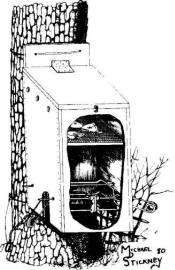
Fig. 9. A “raccoon box” is
suspended 6 inches above the ground and is equipped with
a Conibear®-type trap. Suspended at this level, this set
is dog-proof.
The “pocket set” is very
effective for raccoons, and is made along the water’s
edge where at least a slight bank is present (Fig. 11).
Dig a hole 3 to 6 inches (7.6 to 15.2 cm) in diameter
horizontally back into the bank at least 10 to 12 inches
(25.4 to 30.5 cm). The bottom 2 inches (5.1 cm) of the
hole should be below the water level. Place a bait or
lure (fish, frog, anise oil, honey) in the back of the
hole, above the water level. Set the trap (a No. 1 or 1
1/2 coilspring, doublejaw or stoploss is recommended)
below the water level in front of or just inside the
opening. The trap should be tied to a movable drag or
attached with a one-way slide to a drowning wire leading
to deep water.
Dirt-hole sets (Fig. 12)
are effective for raccoons. Place a bait or lure in a
small hole and conceal the trap under a light covering
of soil in front of the hole. A No. 1 or 1 1/2
coilspring trap is recommended for this set. It is
important to use a small piece of clean cloth, light
plastic, or a wad of dry grass to prevent soil from
getting under the round pan of the trap and keeping it
from going down. If this precaution is not taken, the
trap may not go off.
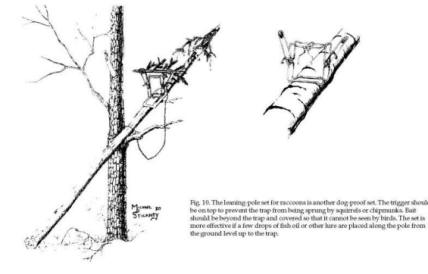
 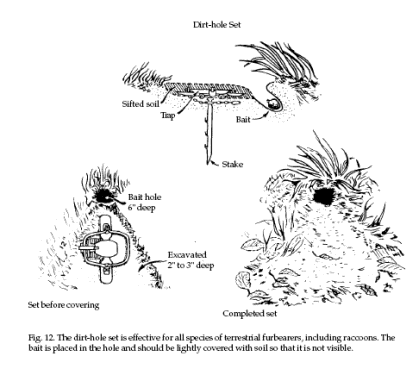
Shooting
Raccoons are seldom seen
during the day because of their nocturnal habits.
Shooting raccoons can be effective at night with proper
lighting. Trained dogs can be used to tree the raccoons
first. A .22-caliber rifle will effectively kill treed
raccoons. Many states have restrictions on the use of
artificial light to spot and shoot raccoons at night,
and shooting is prohibited in most towns and cities. It
is advisable to check with state and local authorities
before using any lethal controls for raccoons.
Many states have
restrictions on the use of artificial light to spot and
shoot raccoons at night, and shooting is prohibited in
most towns and cities. It is advisable to check with
state and local authorities before using any lethal
controls for raccoons.
Economics of Damage and
Control Statistics are unavailable on the amount of
economic damage caused by raccoons, but the damage may
be offset by their positive economic and aesthetic
values. In 1982 to 1983, raccoons were by far the most
valuable furbearer to hunters and trappers in the United
States; an estimated 4.8 million raccoons worth $88
million were harvested. Raccoons also provide recreation
for hunters, trappers, and use of artificial light to
spot and shoot people who enjoy watching them. Although
raccoon damage and nuisance problems can be locally
severe, widespread raccoon control programs authorities
before using any lethal con-are not justifiable, except
perhaps to prevent the spread of raccoon rabies. From a
cost-benefit and ecological standpoint, prevention
practices and specific control of problem individuals or
localized populations are the most desirable
alternatives.
Acknowledgments
Although information for
this section came from a variety of sources, I am
particularly indebted to Eric Fritzell of the University
of Missouri, who provided a great deal of recently
published and unpublished information on raccoons in the
central United States. Information on damage
identification was adapted from Dolbeer et al. 1994.
Figures 1 through 3 from
Schwartz and Schwartz (1981).
Figures 4, 6, and 7 by
Jill Sack Johnson.
Figure 5 from Conover
(1987).
Figures 8, 9, and 10 by
Michael D. Stickney, from the New York Department of
Environmental Conservation publication Trapping
Furbearers, Student Manual (1980), by R. Howard, L.
Berchielli, G. Parsons, and M. Brown. The figures are
copyrighted and are used with permission.
Figure 11 by J. Tom
Parker, from Trapping Furbearers: Managing and Using a
Renewable Natural Resource, a Cornell University
publication by R. Howard and J. Kelly (1976). Used with
permission.
Figure 12 adapted from
Controlling Problem Red Fox by F. R. Henderson (1973),
Cooperative Extension Service, Kansas State University,
Manhattan.
For Additional Information
Conover, M. R. 1987. Reducing raccoon and bird damage to
small corn plots. Wildl. Soc. Bull. 15:268-272.
Dolbeer, R. A., N. R.
Holler, and D. W. Hawthorne. 1994. Identification and
control of wildlife damage. Pages 474-506 in T. A.
Bookhout, ed. Research and management techniques for
wildlife and habitats. The Wildl. Soc. Bethesda,
Maryland.
Kaufmann, J. H. 1982.
Raccoon and allies. Pages 567-585 in J. A. Chapman and
G. A. Feldhamer, eds. Wild mammals of North America:
biology, management and economics. The Johns Hopkins
Univ. Press, Baltimore, Maryland.
Schwartz, C. W., and E. R.
Schwartz. 1981. The wild mammals of Missouri, rev. ed.
Univ. Missouri Press, Columbia. 356 pp.
Sanderson, G. C. 1987.
Raccoon. Pages 486-499 in M. Novak, J. A. Baker, M. E.
Obbard, and B. Malloch, eds. Wild furbearer management
and conservation in North America. Ontario Trappers
Assoc., North Bay.
Editors
Scott E. Hygnstrom; Robert
M. Timm; Gary E. Larson;
PREVENTION AND CONTROL OF
WILDLIFE DAMAGE — 1994
Cooperative Extension
Division Institute of Agriculture and Natural Resources
University of Nebraska -Lincoln
United States Department
of Agriculture Animal and Plant Health Inspection
Service Animal Damage Control
Great Plains Agricultural
Council Wildlife Committee
Special
thanks to:
Clemson University
|